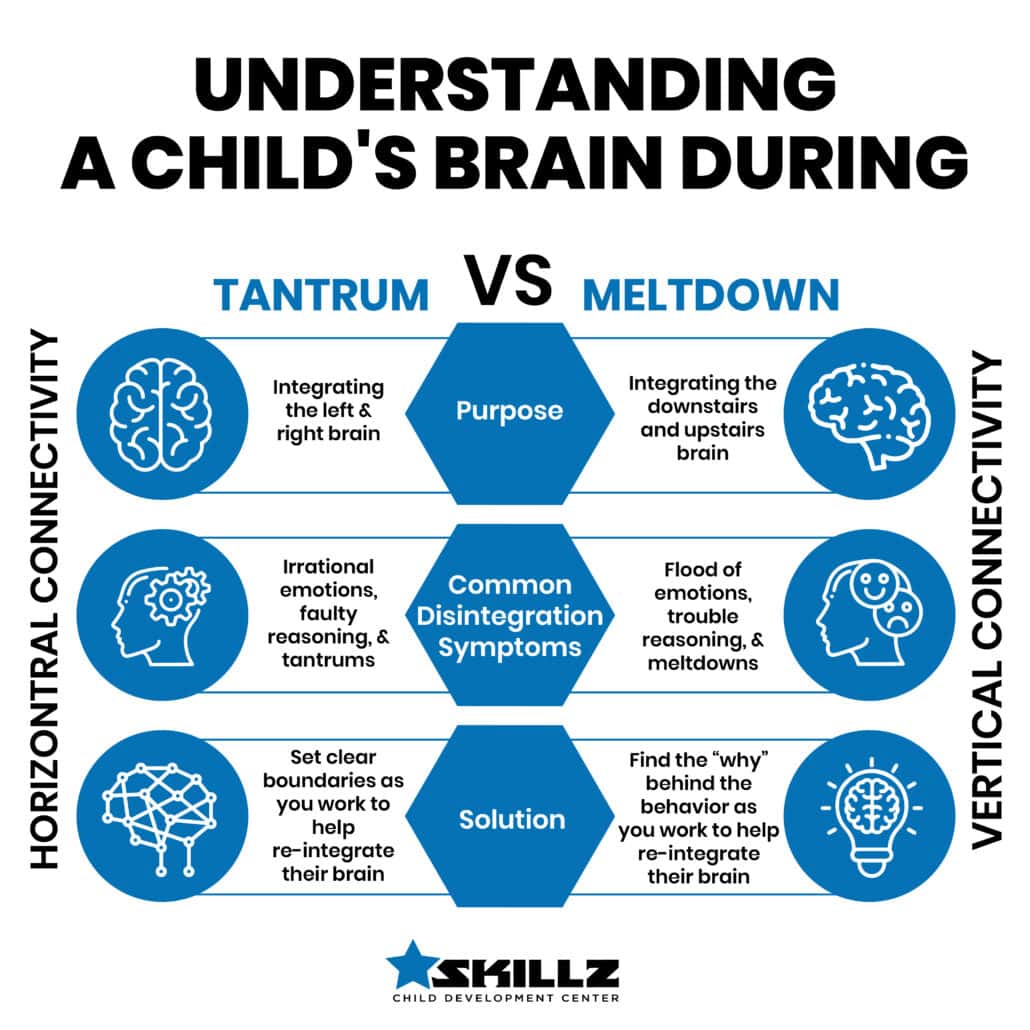As a caring child development expert, I’m here to share insights on two crucial aspects of brain integration: Horizontal Connectivity and Vertical Connectivity. These concepts are essential for helping children develop emotional and cognitive balance, which is key to their overall well-being.
Horizontal Connectivity (Integration)
Horizontal connectivity refers to the integration of the left and right hemispheres of the brain. This integration is vital for balanced emotional and cognitive functioning.
Integrating the Left & Right Brain
The left hemisphere of the brain is typically associated with logical reasoning, language, and analytical thinking. The right hemisphere, on the other hand, is linked to creativity, intuition, and emotional expression. For optimal functioning, these two sides need to work together harmoniously.
Common Dis-integration
When there is dis-integration between the left and right brain, children may exhibit:
– Irrational Emotions: They might react emotionally in situations where a logical response is more appropriate.
– Faulty Reasoning: Their ability to reason and make sound decisions can be compromised.
– Tantrums: Emotional outbursts and tantrums are common signs of horizontal dis-integration.
Helping to Re-integrate the Brain
To help children achieve horizontal integration, it’s important to set clear boundaries while being supportive and understanding. Here are some strategies:
– Encourage Expression: Allow children to express their emotions through art, music, or storytelling, which engages the right brain.
– Promote Logical Thinking: Introduce problem-solving activities and discussions that engage the left brain.
– Set Clear Boundaries: Establish consistent rules and expectations to provide a safe and structured environment.
Vertical Connectivity (Integration)
Vertical connectivity refers to the integration of the “downstairs” and “upstairs” parts of the brain. The “downstairs” brain includes the brainstem and limbic system, which control basic functions, emotions, and instincts. The “upstairs” brain includes the cerebral cortex, responsible for higher-order thinking, reasoning, and self-control.
Integrating the Downstairs and Upstairs Brain
Effective vertical integration allows children to regulate their emotions and think clearly even under stress.
Common Dis-integration
Dis-integration between the downstairs and upstairs brain often results in:
– A Flood of Emotions: Children may feel overwhelmed by intense emotions.
– Trouble Reasoning: They might struggle to think logically or make decisions during emotional distress.
– Meltdowns: Intense emotional outbursts, or meltdowns, are common signs of vertical dis-integration.
Helping to Re-integrate the Brain
To assist children in achieving vertical integration, it’s crucial to understand the root causes of their behavior. Here are some strategies:
– Find the “Why”: Look beyond the behavior to understand the underlying emotions or triggers.
– Calming Techniques: Teach children calming techniques such as deep breathing, mindfulness, or sensory activities to help them manage their emotions.
– Supportive Dialogue: Engage in supportive and empathetic conversations to help children articulate their feelings and develop better self-regulation skills.
Conclusion
Understanding and addressing horizontal and vertical connectivity in children’s brain development is essential for fostering emotional and cognitive balance. By setting clear boundaries, promoting logical and creative activities, and understanding the root causes of behaviors, we can help children achieve better brain integration. This leads to more stable emotions, improved reasoning, and overall healthier development.
As caregivers and educators, our role is to support children through these processes, helping them build a strong foundation for a balanced and fulfilling life.


